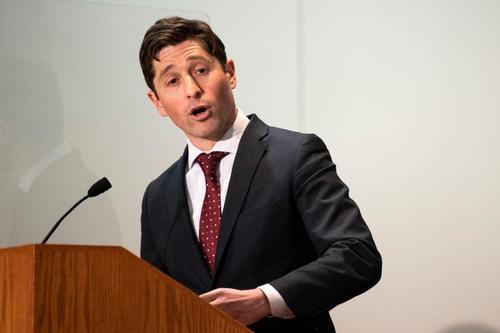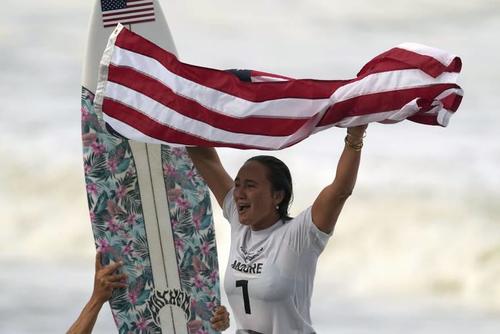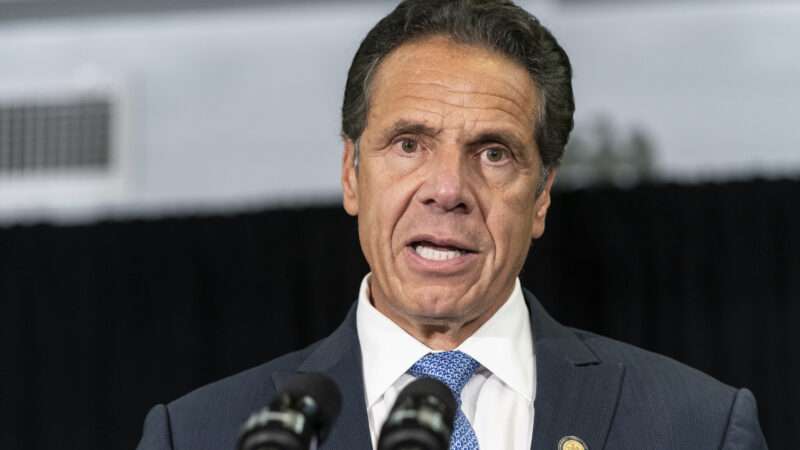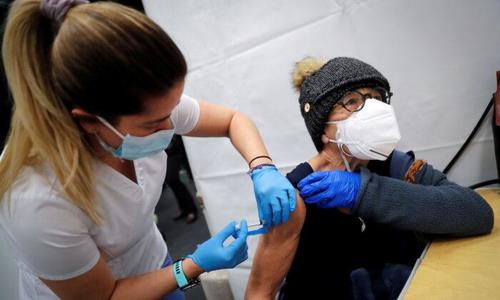Virtue-Signaling Mayors Get Amnesia On Campaign Trail After ‘Defund The Police’ Results In National Murder-Fest
After spending much of 2020 indulging leftist cries to ‘defund the police’ in the wake of the George Floyd murder and other police-related incidents, liberal mayors and mayoral candidates have made a whiplash-inducing about-face in the wake of a historic crime wave sweeping their cities.
As Politico (!?) notes, “Homicides and shootings are up and the number of cops is down in cities from Atlanta to Seattle. Crime, as a result, is dominating the discourse in mayoral races — driving candidates to talk about beefing up police patrols and bolstering depleted departments’ ranks.“
“When I talk to people, they’re scared,” said Atlanta City Council President Felicia Moore – who’s running against Kasim Reed for mayor. “We have seen and experienced on a daily basis crime that we just haven’t seen before. People know that something has to happen — and they know the first responders to a crime situation are police officers.”
It’s a far cry from the calls to “defund the police” that took center stage in these cities just last summer. But the sobering reality of rising gun violence and flagrant theft is changing the conversation, pushing candidates to get tougher on crime in Democratic-leaning cities.
Meanwhile, New York Mayoral Candidate and retired NYPD captain Eric Adams handily won the Democratic nomination last month on his pro-policing message vs. his progressive rivals who favored shifting funds away from the police.
Politico also notes a “wholesale shift on policing in Seattle,” where the majority of the City Council supported a plan to slash the police department’s budget by 50% following cries to defund the police. Now, one year later, homicides and gun violence are on the rise while the SPD now has a “staffing crisis” on its hands due to a record number of officer departures. Unsurprisingly, none of the mayoral candidates vying to replace Mayor Jenny Durkan is outright backing defunding.
So it was all just political pandering. Shocker.
City Council President M. Lorena González, a top contender for mayor, supported those calls last year but has since distanced herself from them. In forums, she now talks of fully funding the department’s staffing and hiring plan while also investing millions in community-based “harm reduction systems.” González, who said she’s lost family members to gun violence, is also calling for “common-sense local regulations of guns.”
The top-polling candidate heading into the August primary election, former Seattle City Council president Bruce Harrell, has struck a balance between a “strong public safety presence” and promises to “change the culture of the police department.” Now, after a weekend of violent shootings that left four people dead and seven injured, Harrell, who had already pledged to create a cabinet-level position to coordinate the city’s response to gun violence, is calling for more officers. -Politico
These people…
“You don’t hear as much talk about it — even around the country — about defunding the police,” said candidate Lance Randall, who is black. “You hear people talking about accountability, dealing with certain officers. But the term ‘defund the police,’ I’m not hearing a lot of it anymore. Candidates have backed off of it.“
“A lot of people realize now that even though we brought to a head this issue with unarmed Black people, people of color getting killed, we also understand we still have to have police protection,” Randall continued. “Let’s not make our Black communities unsafe with this approach of taking money from the police department and putting it in our communities, and the police won’t respond.”
According to John Jay College assistant professor Christopher Herrmann, who specializes in crime analysis, “A lot of it is pandemic related — it’s unemployment meets financial crisis or food shortages, housing inequality, health care issues,” adding “And all that leads to all these mental health stressors, increased conflict with people.”
Herrmann notes that while overall crime is ‘actually normal or down,’ there have been “significant increases” in homicides and shootings nationwide – having started rising last summer into the ‘defund’ frenzy, and “never kind of went down.”
In Washington DC, Mayor Muriel Bowser reversed course and announced that she plans to ‘re-fund’ the police by adding 170 officers to the city’s force amid a surge in violence and several high-profile shootings across the city.
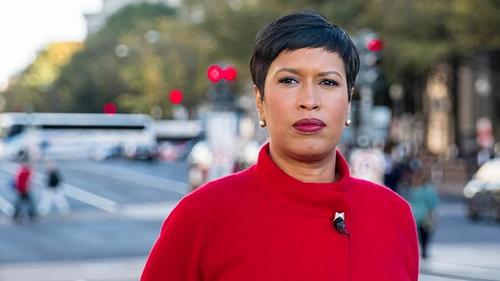
“Right now, I have directed MPD to use any overtime necessary to meet our public safety demands,” Bowser, a Democrat, wrote in a statement. “But we know that is not a complete solution or the right long-term solution. We also know we need all of our officers to be fresh, rested, and in the best position to make good decisions – and that requires having a full force to meet all of our community’s needs.”
Bowser is a vocal supporter of the Black Lives Matter movement, which has pushed for defunding the police in favor of community policing and funding social justice organizations.
Last year, the city council voted to defund the police department by shifting $23 million out of its budget in a move that Bowser publicly opposed.
Homicides in the city hit a 16-year high in 2020 and local media outlets reported in April of this year that 2021 was on track to be even deadlier. Earlier this month, gunfire broke out near the Washington Nationals baseball stadium causing players and fans to flee the area in a chaotic scene that drew national attention. –Fox News
In Atlanta, candidate Moore made combating “out-of-control” crime ranging from rapes to gun violence a centerpiece of her platform against Mayor Keisha Lance Bottoms back in January. In May, however, Bottoms announced that she wouldn’t seek reelection.
“You can’t just let crime spiral out of control while you’re waiting for your approaches to work in supporting programs and activities to help people,” said Moore, adding “You’ve got to do both at the same time.”
Moore’s opponent, former two-time Atlanta Mayor Kasim Reed, is also campaigning on a pro-police platform.
“I’m going to build a bigger police force. I’m going to spend more money than we have ever spent on training,” said reed, adding that it will take “balance” to get things right. “It’s not as much tough talk as it is an array of solutions that, while it may not sound as sexy as ‘defund the police,’ it is a global approach that really does touch on multiple aspects of crime.”
In Minneapolis, however, Mayoral candidates Sheila Nezhad and Kate Knuth are both campaigning on a platform which would support a plan to dismantle the city’s police department in the wake of the George Floyd murder at the hands of a Minneapolis police officer last year. The plan would replace the MPD with a ‘Department of Public Safety’ which would combine the city’s violence prevention and emergency response functions and “allow us to dramatically reduce — and maybe sometime in the future — no longer need law enforcement officers as part of the department,” according to Nezhad.
More than 200 officers have already left the Minneapolis Police Department in the year since one of their own killed Floyd. But Frey — who, like Nezhad and Knuth, is a Democrat — sees that as a negative that could hamper the city’s ability to respond to 911 calls, shootings and domestic violence incidents.
Frey is holding fast to what he calls a “both-and approach” to public safety. That means “deep structural changes” to the department — like overhauling its use of force policy and sending more mental health responders and social workers on calls — while still keeping up the number of cops. -Politico
Read the rest of the report here.
Tyler Durden
Thu, 07/29/2021 – 14:25
via ZeroHedge News https://ift.tt/3A31z5V Tyler Durden


